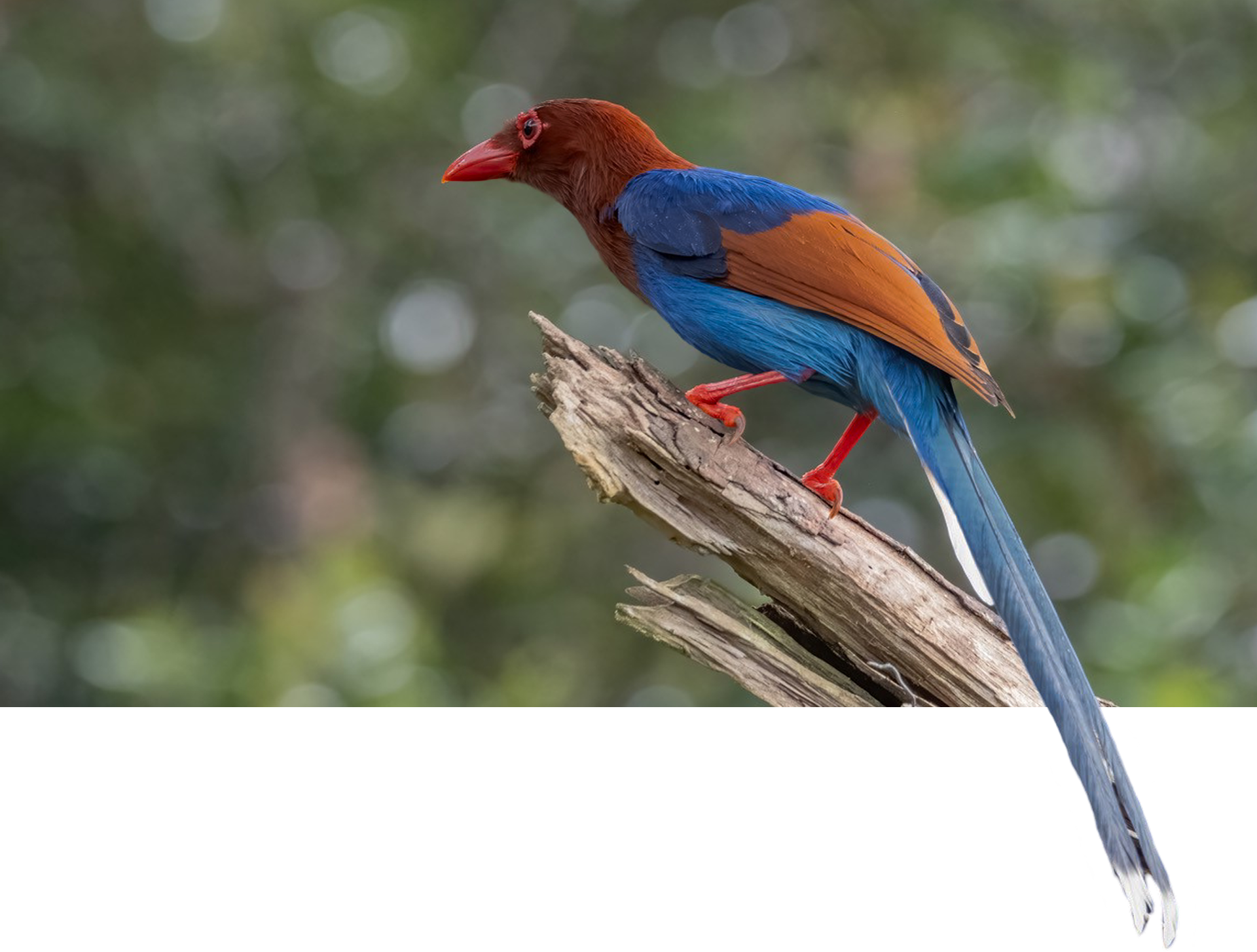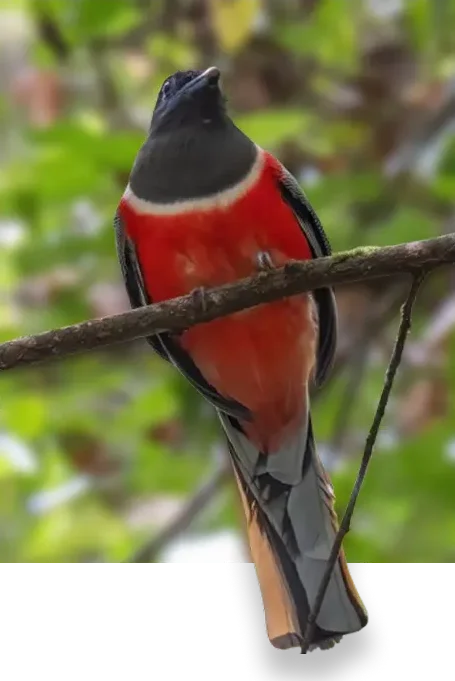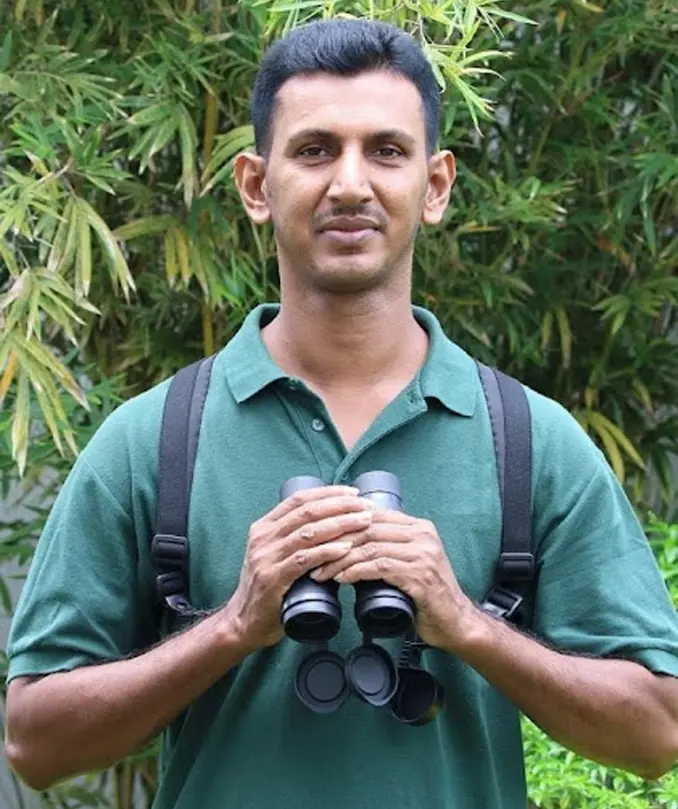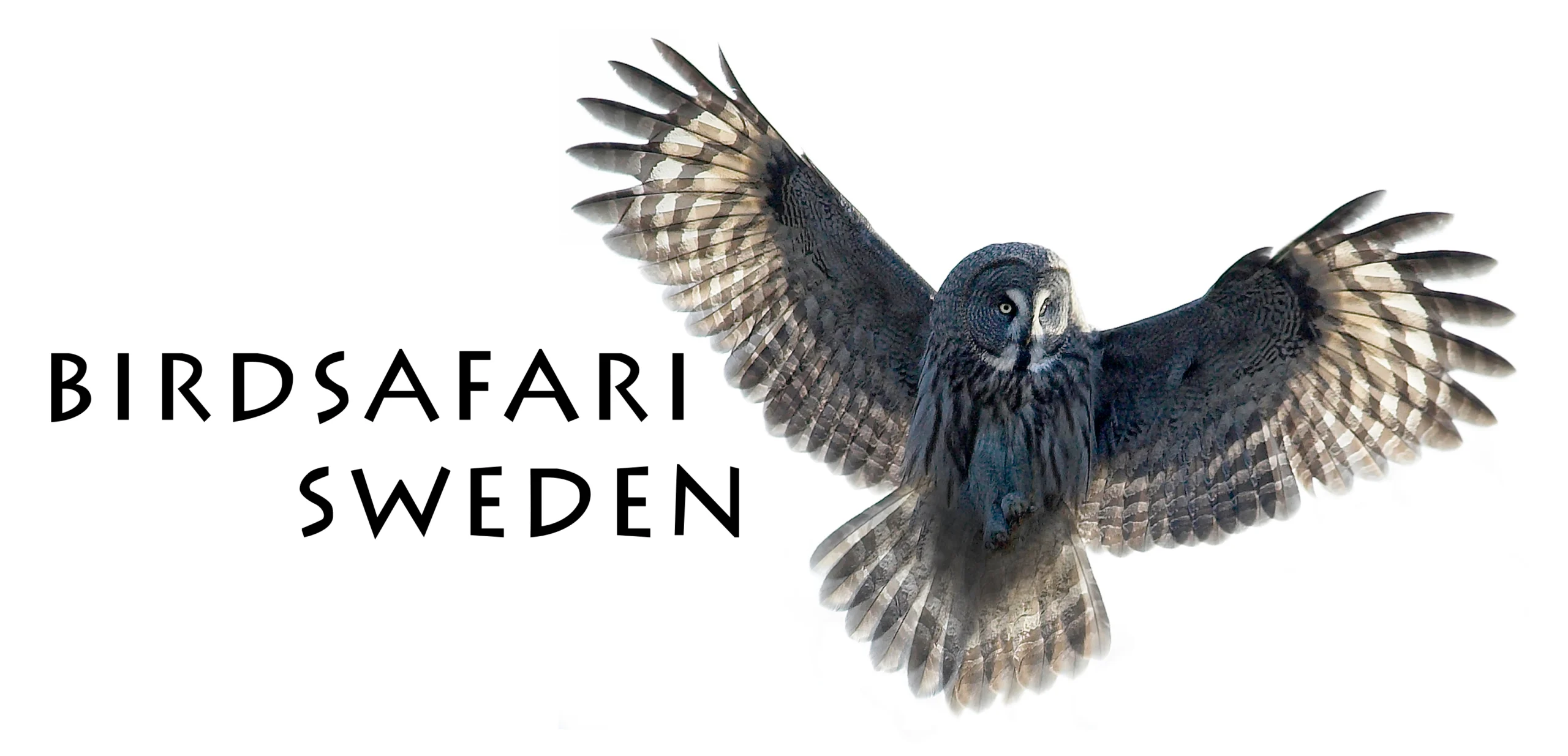
Your Guide to Bird
Watching in Sri Lanka
Spot 35 endemics and 240+ species in two weeks!
Explore Sri Lanka’s birdlife with expert guides.

Discover Unique Avian
Species in Sri Lanka.
Sri Lanka is a birdwatcher’s paradise, home to over 240+ species, including 35 rare endemics. From lush rainforests to coastal lagoons, its diverse ecosystems offer incredible birdwatching and photography opportunities, attracting nature lovers worldwide.
Our Top Guides:
Experts in Birding.
Saman Gamage
Saman, born near Bundala National Park, has been immersed in wildlife since childhood. A seasoned ranger and tracker for Bundala, Yala, and Udawalawe, he has deep expertise in the terrain and species of these parks. He has worked on conservation raids, assisted researchers, and contributed to BBC documentaries, including Elephant Island. Also experienced in human-elephant conflict mediation, his renowned birding skills make him a sought-after guide.

Dhanushka Perera
Dhanushka, a former banker, became a naturalist to pursue his passion for wildlife. An expert in birds, mammals, and reptiles, he holds a chemistry degree from ICHEM and was a member of the Young Zoologists Association. He is also a wildlife photographer, video editor, and conservation activist. With extensive field experience, he is a sought-after guide for nature tours.

Gayomini Panagoda
Gayomini is a Sri Lankan birding enthusiast and PhD researcher specializing in waterbird migration. She leads field expeditions on Mannar Island for the Central Asian Flyway-Sri Lanka Waterbird Tracking Program. A dedicated conservationist, she conducts bird ringing and satellite-tagging. Her work earned her the Young Conservation Scientist Award.

Saman Gamage
Saman, born near Bundala National Park, has been immersed in wildlife since childhood. A seasoned ranger and tracker for Bundala, Yala, and Udawalawe, he has deep expertise in the terrain and species of these parks. He has worked on conservation raids, assisted researchers, and contributed to BBC documentaries, including Elephant Island. Also experienced in human-elephant conflict mediation, his renowned birding skills make him a sought-after guide.

Dhanushka Perera
Dhanushka, a former banker, became a naturalist to pursue his passion for wildlife. An expert in birds, mammals, and reptiles, he holds a chemistry degree from ICHEM and was a member of the Young Zoologists Association. He is also a wildlife photographer, video editor, and conservation activist. With extensive field experience, he is a sought-after guide for nature tours.

Gayomini Panagoda
Gayomini is a Sri Lankan birding enthusiast and PhD researcher specializing in waterbird migration. She leads field expeditions on Mannar Island for the Central Asian Flyway-Sri Lanka Waterbird Tracking Program. A dedicated conservationist, she conducts bird ringing and satellite-tagging. Her work earned her the Young Conservation Scientist Award.

The Partners We Fly With

Naturetrek

Avi Fauna Tours

Heaterlea

Wildlife Worldwide

The Traveling Naturalist

Tropical Birding Tours

Birdquest

Wild Images

Birdsafari Sweden

